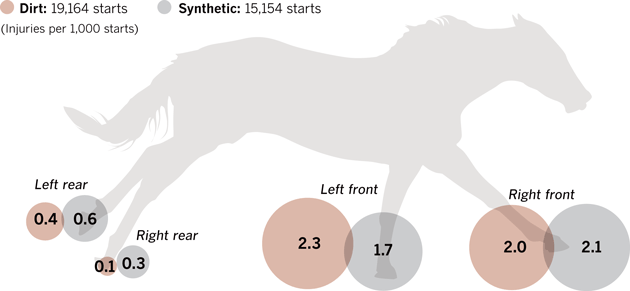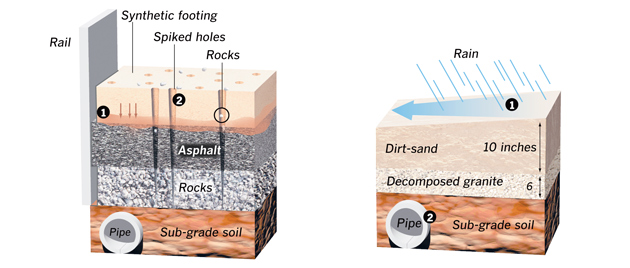Graphic
Racehorse deaths and injuries
At California racetracks in 2010-11, 186 horses died in racing and training accidents. Among the major thoroughbred tracks, Santa Anita had the highest death rates during racing. After drainage problems, Santa Anita switched from synthetic back to a dirt surface last season.

Injuries by type of track
Common injuries
Comparing synthetic and dirt tracks
|
Synthetic
1. Silt and clay mixed into the synthetic surface layer eventually seeped downward, forming an inconsistent hard-pan layer that trapped water. |
Dirt
1. Before heavy rains, track surface is “sealed,” so rain can run off smoothed surface. Track is banked so water can flow to the inside. |







